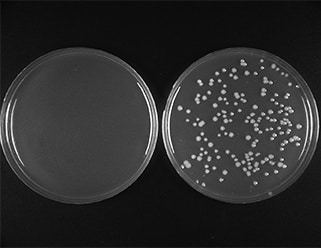

While 125kHz cards are still commonly used, the widely publicized security flaws must be given serious consideration. There are even shop fronts and kiosks that offer card cloning services operating in many cities around the world. Proximity 125kHz copy and emulation circuits have been available to the public for many years, and with instructional videos easy to find and cloning devices readily available on popular shopping websites for less than $30, it’s possible for anyone to copy 125kHz cards today. The ability to copy 125kHz cards - commonly referred to as ‘Prox’ cards - has existed for more than 20 years. The key disadvantage however, is the low level of security. This allows users to present, swipe, or wave their card in the general direction of the reader to get a successful read. In effect, this is very similar to the way the old mag-stripe readers worked.Īpart from being low cost, the only real advantage of 125kHz is that due to the lower power requirements and small amount of data being transmitted, it offers a good read range (of around 10cm or 3.9in) and a short read time. The data transmitted by the card is not encrypted and is always the same. When a 125kHz card comes within range of a reader, the card immediately begins to transmit its card number. High throughput sequencing methods have revolutionized genomic analysis by producing millions of sequence reads from an organism’s DNA at an ever decreasing cost.The first of the proximity technologies was 125kHz. Whole genome assembly from next generation sequencing data using restriction and nicking enzymes in optical mapping and proximity-based ligation strategies.A Modern Day Gene Genie Sir Richard Roberts on Rebase.Read about Type II restriction enzymes and the distinguishing properties of the four principle subtypes. Type II Restriction Enzymes: What You Need to Know | NEB.Restriction Endonucleases: Molecular Cloning and Beyond.Restriction Enzymes at NEB: Over 30 years of Innovation.When selecting a restriction site(s) to add to the primers, it is important to determine which site(s) will be compatible with your selected vector, whether directional cloning is desired and, most importantly, confirm that the recognition site(s) does not occur within the gene or DNA fragment. These additional bases provide sufficient DNA for the restriction enzyme to bind the recognition site and cut efficiently. When adding restriction sites to a PCR primer, it is recommended to include 6 bases between the recognition site and the 5’ end of the primer. In order to generate compatible ends, it is common to add restriction sites to the 5’ end of both PCR primers. The Polymerase Chain Reaction (PCR) is commonly used to amplify a gene or DNA fragment of interest, from any source of DNA, to be cloned. In this case, it is essential that the gene be inserted in the correct orientation and in frame with the transcription promoter. The gene of interest is most commonly subcloned into an expression vector for improved protein expression and/or addition of a purification tag. Restriction enzymes that have a recognition site within the multiple cloning site (MCS) are commonly used since they do not cut elsewhere in the vector DNA and typically produce two easily resolved DNA fragments. Subcloning requires the use of 1-2 restriction enzymes that cut immediately outside the insert fragment without cutting within the insert itself. This method of preparation provides DNA fragments of the desired size with ends compatible to the selected vector DNA. Most often, a serial dilution of the selected restriction enzyme(s) is used to digest the starting material and the desired insert size range is isolated by electrophoresis followed by gel extraction of the DNA. The desired insert size for the clone library determines which enzymes are selected, as well as the digestion conditions. Genomic DNA, regardless of the source, is typically digested with restriction enzymes that recognize 6-8 consecutive bases, as these recognition sites occur less frequently in the genome than 4-base sites, and result in larger DNA fragments. In all cases, one or more restriction enzymes are used to digest the DNA resulting in either non-directional or directional insertion into the compatible plasmid. Restriction enzymes can also be used to generate compatible ends on PCR products. The DNA to be cloned can vary widely, from genomic DNA extracted from a pure bacterial culture or a mixed population, to a previously cloned gene that needs to be moved from one vector to another (subcloning). Preparation of DNA for traditional cloning methods is dependent upon restriction enzyme digestion to generate compatible ends capable of being ligated together.


 0 kommentar(er)
0 kommentar(er)
